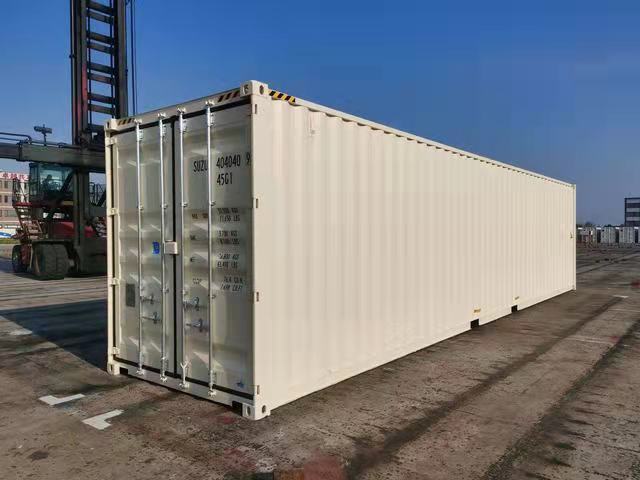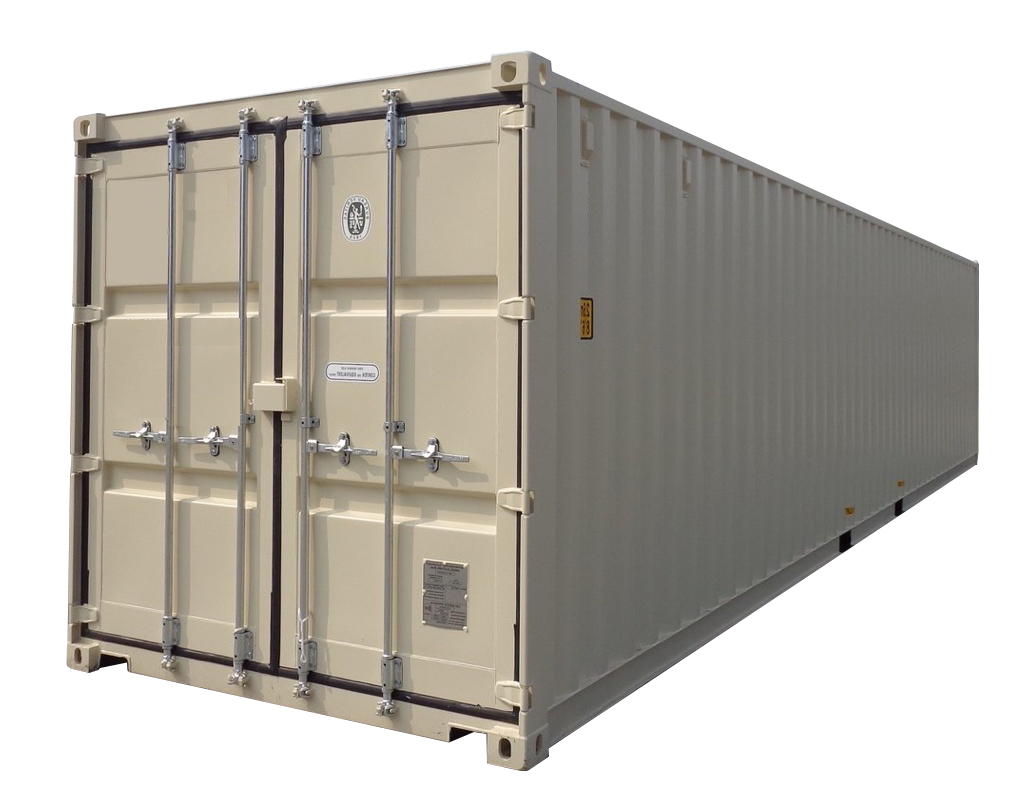How to Rent New Shipping Container 40 x 8 x 9.6 and Reduce Your Environmental Footprint
How to Rent New Shipping Container 40 x 8 x 9.6 and Reduce Your Environmental Footprint
Blog Article
The Ultimate Guide to Picking the Right Shipping Container for Your Demands
When it involves choosing the right shipping container, recognizing your particular demands is crucial. You'll want to think about elements like dimension, type, and product to guarantee you make the ideal choice. From common sizes to specialized choices, there's a great deal to discover. Plus, budgeting for both the container and any modifications can make a large distinction. Let's break down the vital elements to aid you locate the ideal fit for your demands.
Recognizing Shipping Container Sizes
When you're selecting a delivery container, understanding the numerous dimensions available is critical for making the right decision. Delivering containers normally can be found in basic lengths of 20 and 40 feet, however you'll additionally discover various other measurements. Recognizing the dimension you require depends upon what you intend to shop or transport.If you're relocating smaller sized items, a 20-foot container may be perfect, while larger deliveries often need a 40-foot container. Bear in mind that the elevation can additionally differ; high dice containers use added upright area, which can be advantageous for taller goods - New Shipping Container 40' x 8' x 9’6".Before choosing, measure your cargo, and consider exactly how much space you'll need for loading and unloading. Always consider potential future needs-- going with a slightly bigger container might save you hassle down the line. Inevitably, selecting the right dimension will certainly improve efficiency and assure your products are secure during transit
Sorts Of Delivery Containers Available
There are several kinds of shipping containers readily available, each created for specific objectives and cargo requirements. The common dry container is functional, ideal for basic cargo. If you're shipping disposable products, take into consideration a chilled container, which preserves a regulated temperature. For extra-large things, high dice containers provide added height, accommodating taller loads.If you need to transfer hefty machinery or devices, level shelf containers give a durable base without wall surfaces. On the other hand, open-top containers enable very easy loading of tall freight, with a detachable tarp covering for security. If you're seeking flexibility, think about a retractable container that can be conveniently kept when not in use.Lastly, specialized containers like tank containers are utilized for fluids, while vented containers are made for bulk cargo that needs ventilation. Understanding your freight kind will help you choose the right container to satisfy your delivery requires successfully.
Product Considerations for Durability
When selecting a shipping container, the material plays an important duty in its durability. You'll intend to evaluate the benefits of steel versus aluminum, specifically relating to deterioration resistance. Recognizing these variables can help you make an extra informed choice for your shipping needs.
Steel vs. Aluminum Containers
Just how do you pick in between steel and light weight aluminum containers for your delivery needs? Begin by considering resilience. Steel containers are robust and deal superb toughness, making them perfect for heavy loads and harsh problems. They resist damage from influences and are usually cheaper, which can be a major element for budget-conscious buyers.On the various other hand, light weight aluminum containers are lightweight, which can save you on delivery prices. They're less complicated to navigate and are a wonderful option if you need to transfer goods regularly. Light weight aluminum is generally more pricey and less robust than steel. Evaluate your specific needs thoroughly, consisting of weight, expense, and the sort of freight you'll be delivery, to make the ideal option for your scenario.
Rust Resistance Factors
Picking the right material does not just include weight and cost; corrosion resistance plays a significant function in sturdiness. When selecting a shipping container, consider the atmosphere it'll face. Steel containers, while solid, can rust if not properly treated. Try to find options with safety coverings or galvanization to improve their life-span. Light weight aluminum, on the other hand, supplies all-natural deterioration resistance, making it ideal for seaside areas or damp conditions. Nonetheless, it can be more costly. In addition, examine page the container's usage-- if it'll be exposed to chemicals or extreme climate, prioritize products that can endure these problems. Investing in a corrosion-resistant container now can save you from pricey repairs or replacements down the line. Select wisely for long-term benefits.
Adjustments and Personalization Options
Shipping containers aren't just for carrying products; they can be transformed to meet your certain requirements via different adjustments and personalization options. You can transform a standard container right into a comfy workplace, a momentary retail store, and even a personal gym. The opportunities are almost endless.Think regarding including home windows, insulation, or ventilation to improve comfort. You could also take into consideration electric circuitry, plumbing, or even customized shelving to boost capability. If safety and security's a problem, reinforced locks can provide tranquility of mind.For visual charm, you can repaint the container or add an one-of-a-kind design to make it stand apart. Do not fail to remember about floor covering options-- whether you want sturdy plywood or something much more sophisticated, it can raise the space.Ultimately, tailoring your delivery container to suit your demands can boost usability and create a special environment that mirrors your style.
Assessing Your Transportation Requirements
When it comes to utilizing your modified shipping container, understanding your transport needs is crucial. Beginning by identifying what you'll be delivery-- whether it's hefty devices, retail items, or personal products. Each kind of cargo has various requirements relating to dimension, weight, and accessibility.Next, think about the range and setting of transport. Are you shipping in your area, nationally, or globally? This impacts the container's design and performance. If you're utilizing vehicles, guarantee your container fits common dimensions for very easy loading and unloading.Additionally, assume about transit conditions. Will your items need special protection from climate or temperature level fluctuations? If so, you could require insulation or ventilation functions in your container.Lastly, evaluate how often you'll be moving products. Constant deliveries might call for a more durable and flexible container to fulfill continuous needs. By resolving these factors, you'll be well-prepared to choose the best delivery container for your needs.
Budgeting for Your Shipping Container
Establishing an allocate your shipping container is necessary for making certain a smooth investing in procedure. Figure out exactly how much you can afford to invest. Rates can differ significantly based on size, problem, and kind. New containers usually cost extra, yet made use of ones can supply considerable savings.Next, think about any added prices you may incur, such as transportation costs, shipment charges, and alterations. If you intend to personalize the container, factor in those expenditures as well. Research study various distributors to contrast prices and locate the finest deal that satisfies your needs.Don' t neglect to include any authorizations or policies that might apply to your acquisition and use the container. By plainly describing your spending plan, you'll be better prepared to make informed decisions, guaranteeing you get the ideal container without breaking the financial institution.
Upkeep and Take Care Of Long life
To guarantee your delivery container lasts for many years, regular upkeep is essential. Beginning by checking the linked here exterior for rust, dents, and damage. If you detect any type of concerns, address them instantly to prevent further degeneration. Clean the container periodically, both throughout, to eliminate dust, particles, and wetness that can lead to corrosion.Ensure the doors seal effectively and lubricate the joints to avoid rust and sticking. If you're using the container for storage, take into consideration including ventilation to decrease moisture and mold growth. For added protection, use a rust-inhibiting paint or sealer look at this website annually.If your container's situated in a rough atmosphere, like seaside areas, you may require to increase upkeep frequency. Watch on the floor covering, too; any type of indications of wear need to be repaired immediately. With these simple steps, you'll extend the life of your delivery container significantly.
Often Asked Questions
Just how Do I Find a Dependable Delivery Container Supplier?
To find a trusted shipping container vendor, start by investigating on-line evaluations, asking for recommendations from buddies or market contacts, and comparing prices. Always check their credentials and assurance they provide top quality containers that satisfy your demands.

Can I Lease a Shipping Container Rather Than Buying?
Yes, you can absolutely rent a shipping container instead of getting one. Many vendors use rental options, which can save you money and supply versatility if you only require it for a brief period.
What Permits Are Required for Container Positioning?

Are Delivery Containers Weatherproof and Appropriate for Outdoor Storage?
Yes, delivering containers are usually weatherproof, designed to stand up to severe conditions. Their durable building and construction maintains your things protected and dry, making them ideal for exterior storage. Simply assure appropriate air flow to avoid dampness accumulation inside.
Exactly how Do I Transfer a Shipping Container Once Purchased?
Report this page